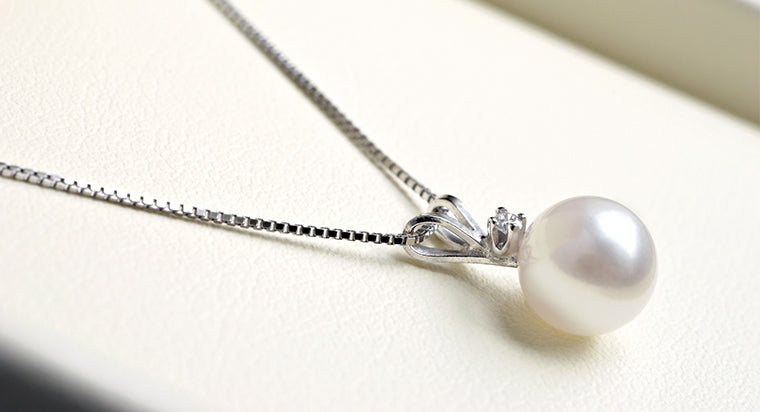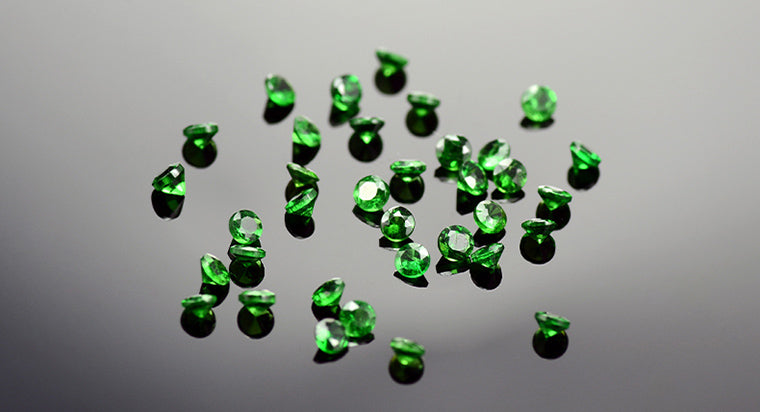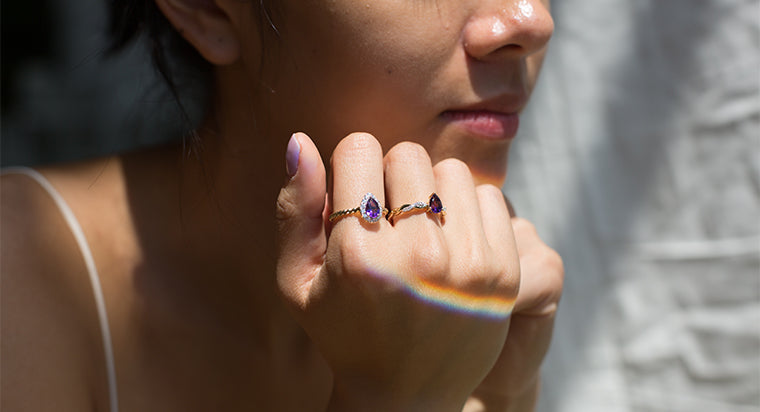Peridot Gemstone

Peridot is a gem-quality magnesium-rich mineral, olivine denoted by the formula (MgFe)2 SIO4. This lovely yellow-green gemstone can be found in the most unlikely places. Rich in iron and magnesium, Peridot gemstones are often found in basalts.
TABLE OF CONTENTS
What is the Meaning of Peridot?
Most notably, this semi-precious gemstone has been designated as August's birthstone and is associated as the gemstone one gifts for the 15th wedding anniversary. Mined by ancient Egyptians on the island of Zabargad, the stunning gem was referred to by these ancient peoples as the "gem of the sun." Historically associated with the sun, this olivine stone has been used to protect the wearer against magic and sorcery. It has been formed into charms to ward off evil and night terrors. Those who believe in the healing properties of stones, hold that this beautiful yellow-green gem can support the wearer in overcoming fear and depression and feelings of guilt and jealousy. Moreover, this gem is also said to support a forgiving nature and to instill confidence in the wearer.
Where is Peridot Found?
From our research, this beautiful gem has been found in what was once lava flows within the US, China, and Vietnam. When discovered in lava flows, the gemstone is found in irregular nodules. Peridot can also be found as large crystals lining pockets or veins of certain types of solidified molten rock in areas of Pakistan, Finland, Myanmar, and the island of Zabargad. Though generally related to volcanic activity, Peridot has also been found on meteorites that have plunged to earth.
Peridot and the 4C's
As with most gemstones, you should be mindful of the 4C's when you shop for Peridot jewelry. The 4C's are:
- Carat, or size: Inexpensive in small sizes, a large Peridot gem can be very valuable.
- Color: Unlike many gems, Peridot only comes in shades of green.
- Cut: Available in many shapes, Peridot exhibits added sparkle and brilliance when well cut.
- Clarity: Better quality Peridot will have no inclusions visible to the naked eye.
Peridot's Color Range
Peridot gemstones have a fairly narrow color range. Most of the Peridot jewelry you find will sport yellowish green stones. However, the stone may be found in colors from a brown-green to a pure green. Peridot stones with a brownish color are considered to be lower quality and will have less value.
What Shapes can a Peridot be Cut Into?
Gemstones may be cut in a wide variety of styles and shapes. Although you can find this olivine stone in round, oval, pear, cushion, triangle, and marquise shapes, you will notice that round and emerald shapes are the most popular.
Round
This is the shape most associated with classic engagement rings. With its allowance for mathematically precise cuts, a round Peridot maximizes light and brilliance.
Emerald
Emerald shaped Peridot gemstones are step cut. This means that the gem sports small rectangular facets resembling stairs or steps. It is the nature of these cuts that gives an emerald-shaped gems an added level of sparkle and brilliance.
Peridot's Clarity
Although better-quality Peridot have no inclusions visible to the naked eye, these stones often have small inclusions. You will often find tiny mineral crystals within the body of this olivine gemstone. These tiny flaws will look like tiny black spots under magnification. Peridots may also have disk-shaped inclusions that are referred to as "lily pads." You will find the clarity of a Peridot graded from AAAA,AAA,AA, to B.
- AAAA or best grading is reserved for natural gems with few inclusions and exceptional color.
- AAA or better grading will indicate that the stone you are considering is of exceptional quality with good color and few inclusions.
- AA grading, while still indicating a good gem, will indicate that there are more inclusions in the stone. These stones may have more muted color and less brilliance.
- B grades indicate a gemstone with more inclusions and less engaging color. You may find gemstones with brownish green color and visible flaws in this category.

Heat-treated Peridot
You will find that many natural Peridot gemstones are treated to enhance color and reduce the appearance of naturally occurring inclusions. Gemstones are heat treated to achieve a color and finish that will truly shine. Heat treatment is 100% natural and permanent. Gems can achieve a higher color and clarity grade through this treatment. The vast majority of gemstones used in jewelry are heat treated.
How to Buy a Peridot?
1. Set a Budget
As with all major purchases, you are going to want to establish a budget before shopping for your jewelry. You can expect a Peridot ring set in 14kt white gold to cost between $400 and $2000 dollars. Obviously, the cost of your jewelry will depend heavily upon the 4C's (carat, color, cut, and clarity). By determining your price range before shopping, you can avoid many of the headaches that often accompany a major purchase.
2. Choose a Shape
Peridot is lovely in a variety of shapes and cuts as discussed above. Decide what shape fits your style before worrying about carat size. Some shapes enhance the perceived size of your gemstone. Choosing a shape and cut that enhances the size and brilliance of your Peridot may help you keep your purchase within budget.
3. Decide on a carat weight
Once you know the budget you are working with and the shape that fits your style, you are ready to decide on the size of your ring. A well cut stone in a stunning setting may have more visual impact than you will get by going for the largest rock you can afford. Work with our gemologists to find the best option for your jewelry or engagement/wedding ring.









